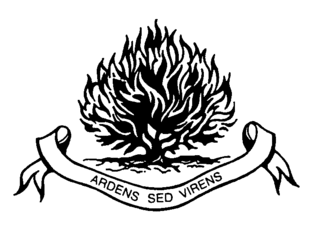
Presbyterianism is a part of the Reformed tradition within Protestantism that broke from the Roman Catholic Church in Scotland by John Knox, who was a priest at St. Giles Cathedral. Presbyterian churches derive their name from the presbyterian form of church government by representative assemblies of elders. Many Reformed churches are organised this way, but the word Presbyterian, when capitalized, is often applied to churches that trace their roots to the Church of Scotland or to English Dissenter groups that formed during the English Civil War.
Presbyterianpolity is a method of church governance typified by the rule of assemblies of presbyters, or elders. Each local church is governed by a body of elected elders usually called the session or consistory, though other terms, such as church board, may apply. Groups of local churches are governed by a higher assembly of elders known as the presbytery or classis; presbyteries can be grouped into a synod, and presbyteries and synods nationwide often join together in a general assembly. Responsibility for conduct of church services is reserved to an ordained minister or pastor known as a teaching elder, or a minister of the word and sacrament.

Donald Cargill was a Scottish Covenanter who worked to uphold the principles of the National Covenant of 1638 and Solemn League and Covenant of 1643 to establish and defend Presbyterianism. He was born around 1619, and was the eldest son of Laurence Cargill of Bonnytoun, Rattray, Perthshire, a notary public, and Marjory Blair. He was educated perhaps at University of Aberdeen and at the University of St Andrews, where he matriculated as a student of St Salvator's College in 1645. He was licensed by the Presbytery of St Andrews on 13 April 1653 and was ordained in 1655. He was later deprived by the Privy Council, on 1 October 1662, for disobeying the Act of Parliament in not keeping a day of thanksgiving for His Majesty's Restoration, and not obtaining presentation and collation from the archbishop before 20 September. He was ordered at the same time to remove beyond the River Tay before 1 November under penalties. Disregarding this sentence, he was charged to appear before the Council on 7 January 1669, and appointed to continue in his confinement, but on petition he was allowed to visit Edinburgh about law affairs. He turned down an offer of a parish at Eaglesham and refused to appear before the privy council to account for his unauthorised preaching. On 16 July 1674 he was affectedly outlawed for holding conventicles and subsequently declared a traitor. In 1679 he joined Richard Cameron in founding the Cameronians, who embodied their principles in a Declaration at Sanquhar, on 22 June 1680, disowning the king's authority. A reward of 3000 merks was offered for his apprehension, dead or alive. For excommunicating at Torwood in September 1680 Charles II., James, Duke of York, and others, the Privy Council increased the reward to 5000 merks. After numerous hair-breadth escapes he was apprehended at Covington Mill, Lanarkshire, during the night of 12 July 1681 by a party of dragoons led by James Irving of Bonshaw. Tried for treason before the High Court of Justiciary, he was found guilty, and executed at the Cross of Edinburgh with four others [Walter Smith, William Cuthil, William Thomson, James Boig], 27 July 1681. His forfeiture was rescinded by Act of Parliament 4 July 1690. He married Margaret, daughter of Nicol Brown, burgess of Edinburgh, widow of Andrew Bethune of Blebo.
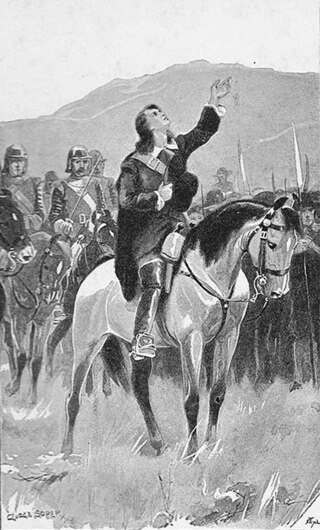
Richard Cameron was a leader of the militant Presbyterians, known as Covenanters, who resisted attempts by the Stuart monarchs to control the affairs of the Church of Scotland, acting through bishops. While attempting to revive the flagging fortunes of the Covenanting cause in 1680, he was tracked down by the authorities and killed in a clash of arms at Airds Moss in Ayrshire. His followers took his name as the Cameronians and ultimately formed the nucleus of the later Scottish regiment of the same name, the Cameronians. The regiment was disbanded in 1968.

Ebenezer Erskine was a Scottish minister whose actions led to the establishment of the Secession Church.

The Reformed Presbyterian Church of Australia is a Reformed church in Australia. It is a small Presbyterian church numbering slightly over 200 persons with its largest congregation in the area of Geelong, Victoria. The first church, in Geelong, was started in 1858. It links itself historically with those in the Covenanter movement in Scotland who did not accept the settlement of Presbyterianism in that country in 1690, and has sister denominational relations with the Reformed Presbyterian churches of North America, Ireland, and Scotland. Fraternal relations exist with the Presbyterian Church of Eastern Australia.
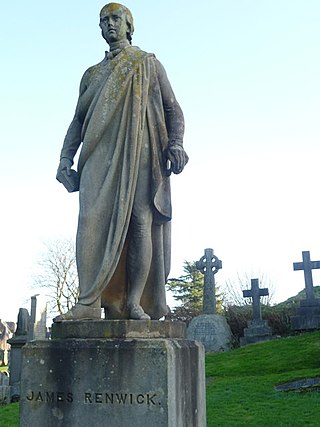
The Killing Time was a period of conflict in Scottish history between the Presbyterian Covenanter movement, based largely in the south west of the country, and the government forces of Kings Charles II and James VII. The period, roughly from 1679 to the Glorious Revolution of 1688, was subsequently called The Killing Time by Robert Wodrow in his The History of the Sufferings of the Church of Scotland from the Restoration to the Revolution, published in 1721–22. It is an important episode in the martyrology of the Church of Scotland.

James Renwick was a Scottish minister with whose death on the scaffold, at the early age of 26, closed the sanguinary persecution directed against religious liberty in Scotland by the house of Stewart. He was born at Moniaive in Dumfriesshire on 15 of February 1662, being the son of a weaver, Andrew Renwick. Educated at Edinburgh University, he joined the section of the Covenanters known as the Cameronians about 1681 and soon became prominent among them. Afterwards he studied theology at the university of Groningen and was ordained a minister in 1683. Returning to Scotland “full of zeal and breathing forth threats of organized assassination,” says Mr Andrew Lang, he became one of the field-preachers and was declared a rebel by the privy council. He was largely responsible for the “apologetical declaration” of 1684 by which he and his followers disowned the authority of Charles II.; the privy council replied by ordering every one to abjure this declaration on pain of death. Unlike some of his associates, Renwick refused to join the rising under the earl of Argyll in 1685; in 1687, when the declarations of indulgence allowed some liberty of Worship to the Presbyterians, he and his followers, often called Renwickites, continued to hold meetings in the fields, which were still illegal. A reward was offered for his capture, and early in 1688 he was seized in Edinburgh. Tried and found guilty of disowning the royal authority and other offences, he refused to apply for a pardon and was hanged on 17 of February 1688. Renwick was the last of the Covenanter martyrs.

The Reformed Presbyterian Church General Assembly (RPCGA) is a Presbyterian church body and conservative denomination in the United States established in 1991. The RPCGA was founded by members of the Reformed Presbyterian Church in the United States.

The Reformed Presbyterian Church of North America (RPCNA) is a Presbyterian church with congregations and missions throughout the United States, Canada, Japan, and Chile. Its beliefs—held in common with other members of the Reformed Presbyterian Global Alliance—place it in the conservative wing of the Reformed family of Protestant churches. Below the Bible—which is held as divinely inspired and without error—the church is committed to several "subordinate standards," together considered with its constitution: the Westminster Confession of Faith and Larger and Shorter Catechisms, along with its Testimony, Directory for Church Government, the Book of Discipline, and Directory for Worship.
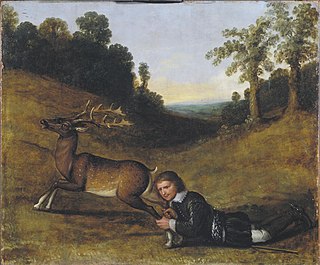
Alexander Shields or Sheilds or Sheills was a Scottish, Presbyterian, nonconformist minister, activist, and author. He was imprisoned in London, in Edinburgh and on the Bass Rock for holding private worship services. After his escape from prison he wrote A Hind Let Loose which amongst other things argues for the rights of people to resist tyrants including the bearing of arms and the resistance of taxes. It even argues that assassination, in extreme cases, is sometimes justified. Shields was one of the ministers who supported the Cameronians who disowned the king. They were brutally put down. All three of the Cameronian field-preachers, of which Shields was one, rejoined the church after the Revolution. Shields served as a chaplain to King William's armies in the Low Countries. Shields was later called to be a minister at St Andrews but did not stay there long as he joined the second Darien Expedition. After its failure he died on Jamaica under 40 years of age.

The Reformed Presbyterian Church of Ireland is a Presbyterian church in Ireland. The church currently has forty-three congregations, of which thirty-five are located in Northern Ireland; the remaining eight are located in the Republic of Ireland. As of 2011, its total communicant membership is 1,952. The distribution of Reformed Presbyterians accords with the distribution of the Ulster Scots, with most congregations based in counties Antrim, Londonderry and Down. Several new congregations have, however, been formed recently in the Belfast area, along with new fellowships in Galway and Dublin.

Covenanters were members of a 17th-century Scottish religious and political movement, who supported a Presbyterian Church of Scotland, and the primacy of its leaders in religious affairs. The name is derived from Covenant, a biblical term for a bond or agreement with God.

The Reformed Presbyterian Church of Scotland is a small, Scottish, Presbyterian church denomination. Theologically they are similar to many other Presbyterian denominations in that their office-bearers subscribe to the Westminster Confession of Faith. In practice, they are more theologically conservative than most Scottish Presbyterians and maintain a very traditional form of worship. In 1690, after the Revolution, Alexander Shields joined the Church of Scotland, and was received along with two other ministers. These had previously ministered to a group of dissenters of the United Societies at a time when unlicensed meetings were outlawed. Unlike these ministers, some Presbyterians did not join the reconstituted Church of Scotland. From these roots the Reformed Presbyterian Church of Scotland was formed. It grew until there were congregations in several countries. In 1876 the majority of Reformed Presbyterians, or RPs, joined the Free Church of Scotland, and thus the present-day church, which remained outside this union, is a continuing church. There are currently Scottish RP congregations in Airdrie, Stranraer, Stornoway, Glasgow, and North Edinburgh. Internationally they form part of the Reformed Presbyterian Communion.

The Reformed Presbyterian Global Alliance is a communion of Presbyterians originating in Scotland in 1690 when its members refused to conform to the establishment of the Church of Scotland. The Reformed Presbyterian churches collectively have approximately 9,500 members worldwide in Northern Ireland, the Republic of Ireland, Scotland, France, the United States of America, Canada, Japan, South Sudan, and Australia.
Robert Hamilton (1650–1701), second baronet of Preston, was one of the leaders of the Scottish Covenanters. He was the son of Sir Thomas Hamilton, and brother of Sir William, first baronet of Preston. Hamilton was educated at Glasgow University under Professor Burnet. He attached himself to the cause of the Covenanters, and appears in command at Drumclog and Bothwell Brig. After the defeat he retired to Holland, where he remained with his brother-in-law, Gordon of Earlston, until the Revolution of 1688. He declined to recognise title of Prince of Orange, on the ground that he was not a Covenanted sovereign. He was arrested in Edinburgh for being concerned in the second Sanquhar Declaration of August, 1692, issued by the "United Societies". On liberation, he left his testimony afresh against backsliding in Church and State, and becomes as far as one person could be the main stay of "the afflicted Remnant." He died, unmarried, aged 51.
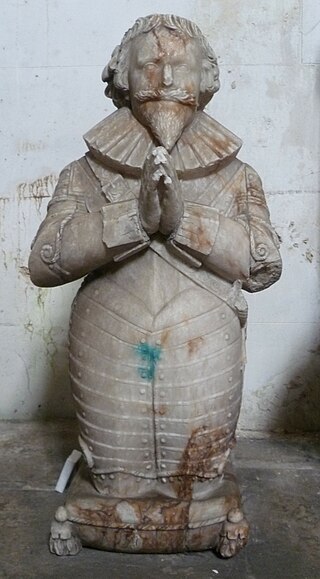
Scottish religion in the seventeenth century includes all forms of religious organisation and belief in the Kingdom of Scotland in the seventeenth century. The 16th century Reformation created a Church of Scotland, popularly known as the kirk, predominantly Calvinist in doctrine and Presbyterian in structure, to which James VI added a layer of bishops in 1584.

Presbyterianism has had a presence in the United States since colonial times and has exerted an important influence over broader American religion and culture.
Thomas Nairn was a controversial Scottish Presbyterian minister. Although he served in several Presbyterian denominations perhaps his most important contribution to church history was his role in setting up the organisation which eventually became the Reformed Presbyterian Church. Although his stay with that religious community was relatively short he was acknowledged, by right of his valid ordination, to have the authority, along with John M'Millan, to form a legitimate presbytery and in so doing to be able to ordain others to the offices of the church. Before Nairn's arrival M'Millan had for more than 36 years been the only minister in what was essentially a small denomination known as the United Societies. Nairn had previously been a minister in the Associate Presbytery of the First Seceders, although he started and ended his days in the Church of Scotland.

John M'Millan was the founding Father of the Reformed Presbyterian Church. He was the first minister of the Cameronians after the Revolution Settlement. He was born at Minnigaff, near Newton Stewart in Kirkcudbrightshire, around 1669, and spent his boyhood near his birthplace. Before he began his ministerial career he was elected an elder of Girthon session. He attended Edinburgh University 1695-7, and graduated with an M.A. on 28 June 1697. He was licensed on 26 November 1700, spending part of his probation as tutor with the Laird of Broughton, 1700-1. He preached for the first time in Balmaghie Church on 22 December 1700, apparently as ordinary supply, and on 30 April 1701, was elected to the parish. The call was reported to the Presbytery on 24 June, and he was ordained on 19 September. The controversy regarding his ecclesiastical attitude lasted from October 1702 to 30 December 1703, when he was deposed. His name first appears in the minutes of the General Meeting of the Dissenters when they considered a letter from him, 5 April 1704. He conferred with its members on 31 January 1705, and 13 February 1706, and on 14 August 1706, submitted to them. The Societies called him on 9 October. The Covenants were renewed at Auchensaugh on 23–4 July 1712. M'Millan left the Balmaghie Manse in 1727, and during 1729-34 resided at different places in the parish of Carnwath, and at Braehead from 1734-53. The Presbytery was erected at Braehead on 1 August 1743, and a disruption took place in it in April 1753. He died at Broomhill on 1 December 1753.














